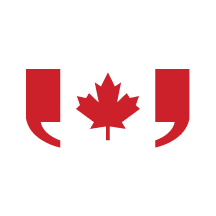OTTAWA — The inflation rate in Canada decreased to 1.7% in July, primarily due to lower gas prices. Statistics Canada reported this figure on Tuesday, noting it was down from 1.9% in June and slightly below economists' expectations.
The decline in gas prices was significant, with a year-over-year drop of 16.1%. This decrease was largely attributed to the removal of the consumer carbon price earlier this year. Additionally, gas prices fell by 0.7% on a monthly basis. Factors contributing to the lower global crude oil prices included increased production from oil-exporting countries and a ceasefire in the conflict between Israel and Iran.
However, while gas prices provided relief, other costs were on the rise. Inflation for grocery items accelerated to 3.4% annually in July, up from 2.8% in June. Notably, prices for confectionery items surged by 11.8%, and coffee prices increased by 28.6%. Statistics Canada indicated that poor growing conditions in cocoa and coffee-producing countries were responsible for these higher costs. Fresh grape prices rose nearly 30%, contributing to an overall increase of 3.9% in fresh fruit prices compared to 2.1% in June.
Shelter costs also saw a modest increase, with inflation rising to 3% in July from 2.9% in June. This marked the first increase in shelter inflation since February 2024. Rent prices particularly increased in provinces such as Prince Edward Island, Newfoundland and Labrador, and British Columbia. Although lower mortgage costs have helped moderate the overall rise in shelter inflation, natural gas prices fell less than in June, primarily due to higher costs in Ontario.
The Bank of Canada is closely monitoring these inflation figures as it prepares for its next interest rate decision on September 17. The central bank maintained its policy rate at 2.75% during its last meeting at the end of July. BMO chief economist Doug Porter noted that the July inflation report did not present enough signs of easing to prompt the Bank of Canada to change its current stance. "There were no big surprises in the July inflation report, but we probably need a downside surprise at this point to prompt the BoC off the sidelines," he stated.
Statistics Canada also reported that the Bank of Canada’s preferred measures of core inflation remained around 3% in July. CIBC senior economist Andrew Grantham explained that the lack of easing in core inflation is largely due to the base-year effect, which distorts annual inflation comparisons. He mentioned that the three-month core inflation readings now show an annualized rate of 2.4% for July.
Grantham added that more data will be available before the Bank of Canada’s next rate decision, but the July inflation figures support his prediction for a quarter-point cut in September. Porter concurred, stating that if the recent trend in core inflation continues and the economy remains soft, it could set the stage for future cuts by the Bank of Canada.

 Canada News
Canada News

 The Canadian Press
The Canadian Press The Chronicle-Journal
The Chronicle-Journal Medicine Hat News
Medicine Hat News The Motley Fool
The Motley Fool Associated Press US News
Associated Press US News Washingtonian
Washingtonian CBS News
CBS News Nicki Swift
Nicki Swift Face the Nation
Face the Nation America News
America News MLB
MLB